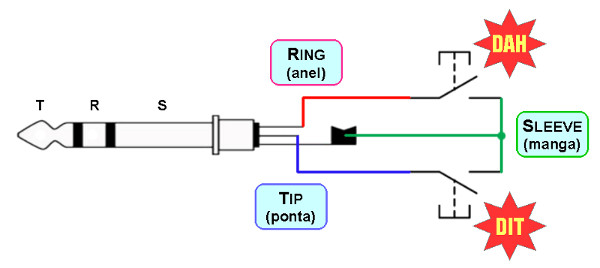|
CT7AFR CW-Keyer About to finally learn some CW (this time, seriously), I decided to build a small keyer with a small speaker to practice my keying. It all started with a simple 555, but then I became greedy and wanted my keyer to do it all, at least something more than just beeping a speaker. The result, so far, is the kit that I explain in this webpage. If you get one of these kits, I hope you enjoy building it, and even more using it! For information on how you can order one of these kits, send me a message to the e-mail address provided on the right of this page --> What you can do with this keyer: - Operate CW in Curtis Modes A or B, Ultimatic or Bug (setup configurable); - Send Morse code using either a paddle, straight key ou bug key (setup configurable); - Adjust the Tone frequency, between 400 Hz and 800 Hz (setup configurable); - Adjust the character transmitting speed (WPM rate), from 5 to 60+ WPM (setup configurable); - Adjust the audio output volume (via onboard potentiometer); - Select the Dit/Dah ratio of either 1:3 or 1:4,4 (setup configurable); - Select the orientation of the paddle or bug key you are using, Normal or Reverse [see Note 1] (setup configurable); - Send Morse Code using a radio, in A1A mode (ON-OFF keying), using the provided MOSFET output to drive the radio PTT line; [1] Normal (or Standard) key orientation is producing Dits with the thumb and Dahs with the index finger (right hand). The kit contents:
Schematics (click on the images below to download full size schematics in PDF format)
Electrical characteristics
Configuration of the keyer To be able to fully configure the keyer, a paddle key should be used. If such key is not available, a pair of push-buttons can be used instead. 
Videos I uploaded two videos on my Youtube Channel (CT7AFR). The first one is a time-lapse of the building process the second one is a demonstration of the kit working. The later is spoke in Portuguese but English subtitles are available. If you haven't seen them yet, please click on the screenshots below:
Any questions or comments about this webpage are welcome via the e-mail address provided on the top right side banner of this website. Users gallery Below are the pictures of CT7AFR-CW-Keyers built by people who gently sent me a photo of their final product. If you want a photo of your keyer to be shown in this page, just send it to me along with you callsign. I will be glad to post it here.
|
|